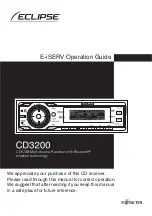
Policy server status and resiliency
You must specify a
Status path
when configuring the VCS's connection to a policy server. It identifies the
path from where the status of the remote service can be obtained. By default this is
status
.
Up to 3 different policy server addresses may be specified. The VCS polls each address on the specified
path every 60 seconds to test the reachability of that address. The VCS accepts standard HTTP(S) response
status codes. (Note that the developers of the policy service must ensure that this provides the appropriate
status of the service.)
If a server does not respond to status requests, VCS will deem that server's status to be in a failed state and
it will not be queried for policy service requests until it returns to an active state. Its availability will not be
checked again until after the 60 second polling interval has elapsed.
When the VCS needs to make a policy service request, it attempts to contact the service via one of the
configured server addresses. It will try each address in turn, starting with
Server 1 address
, and then if
necessary - and if configured - via the
Server 2 address
and then the
Server 3 address
. The VCS only tries
to use a server address if it is in an active state, based on its most recent status query.
The VCS has a non-configurable 30 seconds timeout value for each attempt it makes to contact a policy
server. However, if the server is not reachable, the connection failure will occur almost instantaneously.
(Note that the TCP connection timeout is usually 75 seconds. Therefore, in practice, a TCP connection
timeout is unlikely to occur as either the connection will be instantly unreachable or the 30 second request
timeout will occur first.)
The VCS uses the configured
Default CPL
if it fails to contact the policy service via any of the configured
addresses.
Note that this method provides resiliency but not load balancing i.e. all requests will be sent to
Server 1
address
, providing that server address is functioning correctly.
Viewing policy server status via the VCS
A summarized view of the status of the connection to each policy service can be viewed by going to the
Policy service status
page (
Status > Policy services
).
The set of policy services includes all of the services defined on the
Policy services
page (
Configuration >
Dial plan > Policy services
), plus if a remote service has been selected for either Call Policy or for
registration restriction policy it will also display a
Call Policy
or a
Registration restriction
service
respectively.
The following information is displayed:
Field
Description
Name
The name of the policy service.
Clicking on a
Name
takes you to the configuration page for that service where you can change any of
the settings or see the details of any connection problems.
URL
The address of the service. Note that each service can be configured with multiple server addresses for
resiliency. This field displays the server address currently selected for use by the VCS.
Status
The current status of the service based on the last attempt to poll that server.
Last
used
Indicates when the service was last requested by the VCS.
Cisco VCS Administrator Guide (X8.1.1)
Page 338 of 507
Overview and status information
Policy server status and resiliency
















































